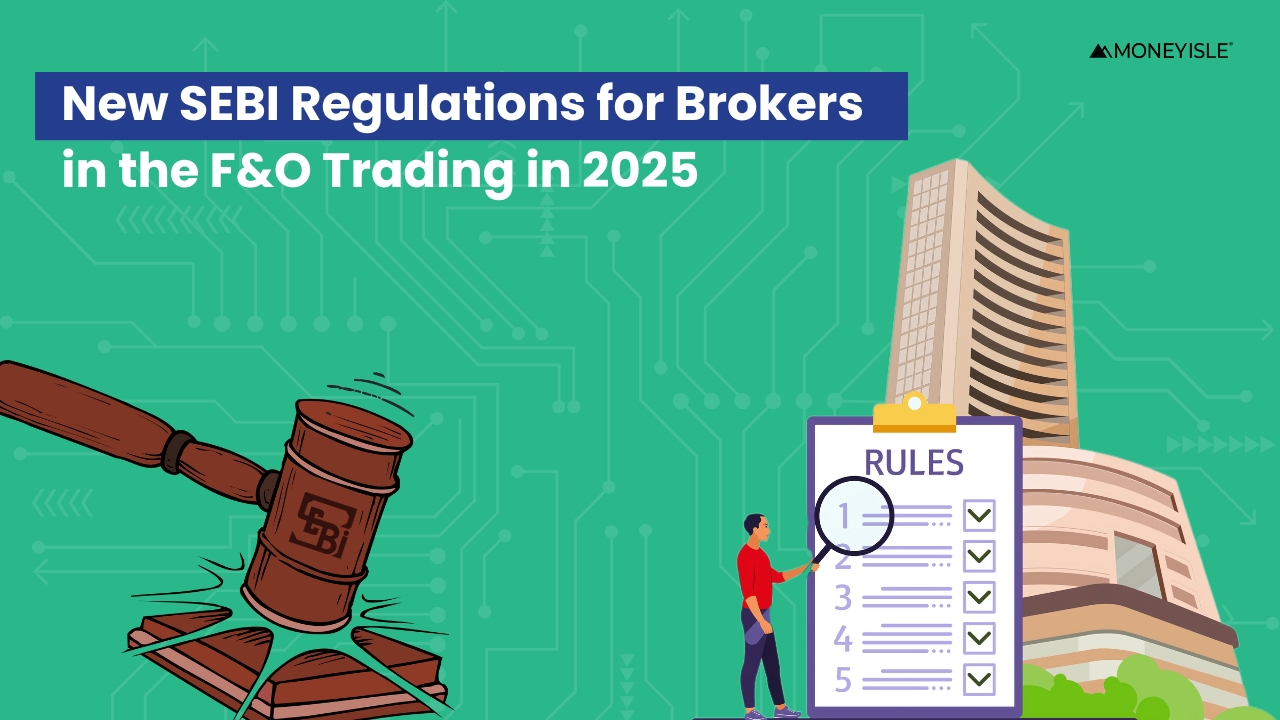The Indian derivatives market has witnessed tremendous growth in the past few years, driven largely by retail participation in Futures and Options (F&O). brokers operating in the F&O space. These new rules aim to increase transparency, enhance investor protection, and ensure best trading app in india brokers are adopting responsible practices while facilitating trades.The Futures and Options (F&O) segment of the Indian stock market has experienced explosive growth in recent years, particularly driven by a surge in retail participation. However, with this rise in activity comes a heightened level of risk, misinformation, and in some cases, irresponsible trading practices. In response, the Securities and Exchange Board of India (SEBI) has implemented a fresh set of regulatory reforms in 2025 aimed at brokers operating within the F&O space. These new regulations are designed to improve market transparency, ensure investor protection, and strengthen the overall financial ecosystem.
Why Were These Changes Introduced?
Retail participation in F&O markets has surged, especially through mobile trading platforms. However, this trend has raised concerns about investor awareness, financial literacy, and risk exposure. Many new traders enter the market without fully understanding the leverage or risks involved in derivatives.
Key Changes Introduced for Brokers in 2025
SEBI’s latest circular includes a variety of new mandates for brokers facilitating F&O trading. The focus is primarily on risk management, investor suitability, transparency, and ethical promotion.
1. Enhanced Risk Profiling and Suitability Checks
Brokers are now required to conduct a detailed risk profiling of clients before granting access to F&O segments. This includes assessing the investor’s income, net worth, trading brokerage charges in india experience, and risk appetite. New investors will have to pass a Derivatives Suitability Test to confirm their understanding of F&O risks before being allowed to trade. This move is designed to prevent unqualified individuals from taking excessive leveraged positions.
2. Higher Initial and Maintenance Margin Requirements
In a bid to reduce systemic risk, SEBI has increased the margin requirements for certain high-volatility F&O contracts. Brokers must now collect these margins upfront and ensure clients maintain adequate balances. Failure to meet intraday margin calls will result in square-off or penalty provisions. This change will impact trading strategies that rely on lower capital and high leverage, encouraging more conservative risk practices.
3. Mandatory Cooling-Off Period
A new rule requires brokers to introduce a five-day cooling-off period between F&O account activation and the commencement of trading. This gives investors time to reconsider their decisions and educate themselves before entering the market. It also acts as a buffer against impulse-driven trading.
4. Standardized Risk Disclosure and Investor Consent
These documents include real-world examples of losses and explain complex concepts like mark-to-market adjustments, unlimited risk in short options, and margin calls. Investors must digitally acknowledge these disclosures before being allowed to place trades.
5. Segmentation of Investors
One of the most notable changes is the segmentation of investors into retail, high-net-worth, and institutional categories. Brokers are required to offer different sets of products based on the investor segment. For example, complex strategies like straddles and strangles may indian stock market price only be offered to experienced traders or HNIs, while retail investors may be restricted to basic index options or covered calls.
6. Ban on Misleading Advertisements and Promotions
SEBI has banned any advertisements or promotions that portray F&O trading as a guaranteed way to earn income. Brokers, influencers, and social media marketers must now include disclaimers approved by SEBI. These changes are meant to protect naive investors from falling prey to aggressive marketing tactics that downplay risks and exaggerate success stories.
7. Real-Time Trade Surveillance and Compliance Audits
Brokers are now required to deploy advanced analytics and AI-powered tools to monitor client behavior in real time. Suspicious trading activities such as manipulation, insider trading, indian share market price or misuse of client accounts must be flagged and reported. SEBI will conduct quarterly audits of brokerage firms to ensure they are adhering to the updated F&O compliance framework.
8. Limited Access to High-Risk Products
Retail investors will no longer have unrestricted access to all F&O contracts. Instruments involving complex multi-leg strategies, naked options selling, or derivatives with high volatility will now be available only to qualified clients. This is to prevent substantial losses among first-time investors who may not fully comprehend the risks.
Impact on Brokers
While these new rules are designed with investor protection in mind, they pose certain operational challenges for brokers. From upgrading technology to implement real-time surveillance systems to revising the onboarding process, the cost of compliance is expected to rise. Brokers also have to train staff to assist clients with the suitability assessments and ensure all legal documents are managed digitally and securely.
However, these reforms also present an opportunity. Brokers that invest in education, transparency, and responsible marketing will likely earn greater trust and loyalty Calculate SIP Returns on Investment in India from their clients. The long-term benefit of reduced client churn and fewer regulatory penalties far outweighs the short-term inconvenience of adapting to new rules.
Impact on Investors
For retail traders, especially first-timers, these regulations bring much-needed guardrails. The suitability test, cooling-off period, and segmented product access act as essential filters to ensure investors don’t jump in blindly. Although some may find these measures restrictive, they ultimately promote a more informed and safer trading environment.
Conclusion
Brokers play a central role in this ecosystem, sebi stock exchange share price and the onus is now on them to maintain transparency, follow compliance rigorously, and promote financial literacy. For investors, this is a positive move that ensures their interests are protected while still allowing them to benefit from the potential of the F&O markets.
As the Indian stock market continues to mature, regulatory steps like these will strengthen market integrity and foster long-term growth. The challenge lies in execution, and the most successful brokers will be those that treat compliance not as a burden, but as a foundation for building lasting client relationships NSE.











